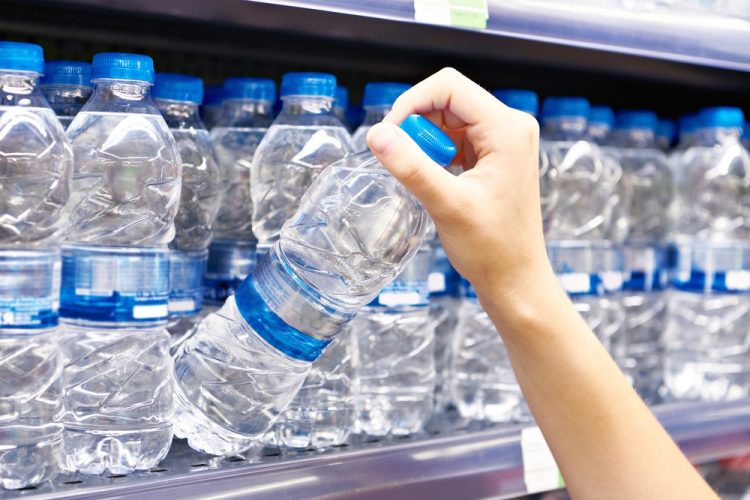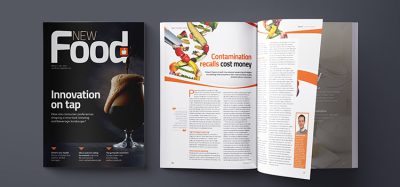Researchers discover PFAS chemicals in drinking water across UK and China
- Like
- Digg
- Del
- Tumblr
- VKontakte
- Buffer
- Love This
- Odnoklassniki
- Meneame
- Blogger
- Amazon
- Yahoo Mail
- Gmail
- AOL
- Newsvine
- HackerNews
- Evernote
- MySpace
- Mail.ru
- Viadeo
- Line
- Comments
- Yummly
- SMS
- Viber
- Telegram
- Subscribe
- Skype
- Facebook Messenger
- Kakao
- LiveJournal
- Yammer
- Edgar
- Fintel
- Mix
- Instapaper
- Copy Link
Posted: 18 October 2024 | Ben Cornwell | No comments yet
A new study reveals the presence of toxic ‘Forever Chemicals’ in drinking water samples available for consumption across the UK and China.


Researchers from the University of Birmingham, Southern University of Science and Technology (Shenzhen) and Hainan University (Haikou) found 10 ‘target’ PFAS chemicals in tap and bottled water available for consumption in major cities across the UK and China.
Perfluoroalkyl and Polyfluoroalkyl Substances (PFAS), nicknamed the ‘Forever Chemicals’, are long-lasting chemicals whose compounds break down very slowly over time and remain in the surrounding environment.
While some have been banned by government regulation in certain countries, others are still widely used to make products such as non-stick cookware, water-repellent clothing, stain-resistant fabrics, cosmetics and items that resist grease, water and oil.
Widespread presence in drinking water
In their findings published in ACS ES&T Water, the researchers found that perfluorooctanoic acid (PFOA) and perfluorooctane sulfonate (PFOS) were detected in over 99 percent of their samples of bottled water.
These 112 bottled samples from local shops and online supermarkets in the UK and China covered 87 brands, with the water sourced originating from 15 countries in Asia, Europe, North America and Oceania.
However, while the natural mineral water contained higher concentrations than purified water, the concentrations found in the bottled water samples tested were generally below health advisory levels set by regulatory agencies.
Furthermore, the researchers collected 41 tap water samples from Birmingham, Worcester, Coventry and Derby in the UK, as well as 14 samples from Shenzhen.
Notably, the study found that Chinese tap water had higher concentrations of PFAS compared to UK tap water.
Although most individual PFAS concentration levels were below health guidelines, the average PFOS levels in tap water from Shenzhen, China, exceeded the maximum contaminant level (MCL) of 4 ng/L set by the US Environmental Protection Agency (EPA) this year.
To help combat the higher levels of PFAS concentration, the researchers highlighted that water treatment methods like boiling or using a jug filter with activated carbon can effectively reduce PFAS levels in drinking water by up to 90 percent, depending on the type of PFAS and the treatment method.
Why is PFAS exposure a concern?
Due to their widespread use, these forever chemicals migrate into the soil, water, and air meaning they can enter the body in various ways, such as through inhalation, ingestion of contaminated food or drinking water, or absorption through the skin.
Despite, extensive research suggesting that PFAS exposure may lead to adverse health effects, such as a lowered immune response to vaccination, decreased fertility and an increased risk of some cancers, more research is needed to better understand these health effects and the long term implications of exposure.
“Our findings highlight the widespread presence of PFAS in drinking water and the effectiveness of simple treatment methods to reduce their levels, said co-author Professor Stuart Harrad from the University of Birmingham.
“While current PFAS levels in most water samples are not a major health concern, ongoing monitoring and regulation are crucial to protect public health.”
Co-author Professor Yi Zheng from Southern University of Science and Technology reiterated his point, emphasising the importance of raising awareness about the presence of PFAS in both tap and bottled water, stating that it can “lead to more informed choices by consumers” and encourage the wider use of water purification methods.
Harrad added that their research provides a “significant step” towards ensuring safer drinking water for communities worldwide.
Related topics
Related organisations
University of Birmingham, US Environmental Protection Agency (EPA)









